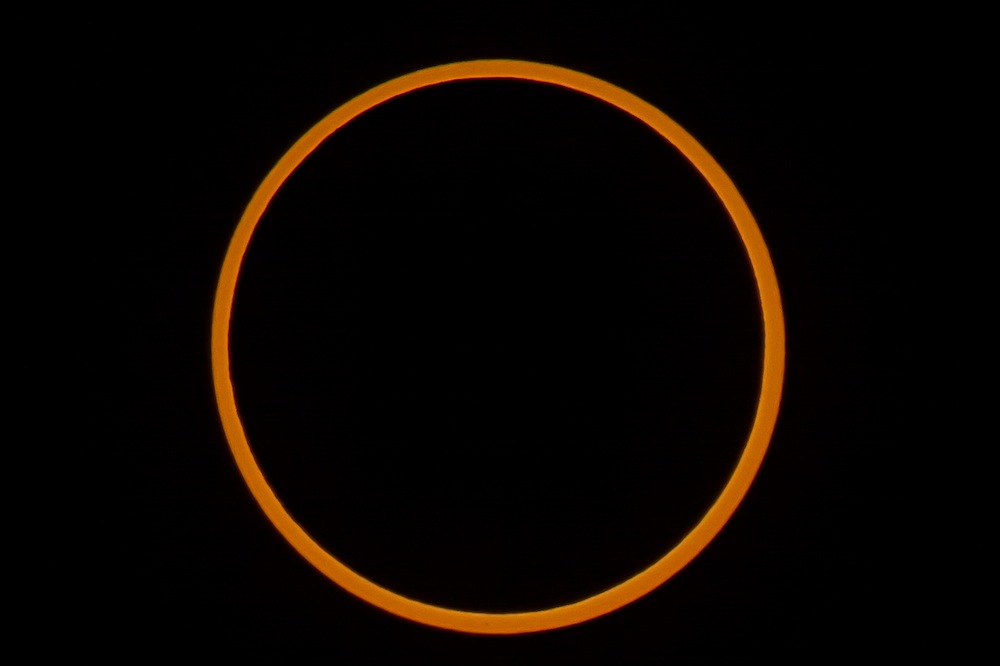
At 3:35 p.m. ET today, people living in the northern edges of Australia should be able to view a total solar eclipse, the last one until 2015.
But since ancient times, people have viewed the moon completely blacking out the sun for mere minutes — the entire eclipse, as the moon's shadow moves across Earth, can take hours, as it will today — as omens that indicate an impending miracle, the wrath of God, or the doom of a ruling dynasty. (See webcasts of today's solar eclipse.)
Here are some of the most famous eclipses in history.
Ugarit Eclipse
One of the earliest solar eclipses recorded, the Ugarit eclipse darkened the sky for two minutes and seven seconds in 1374 B.C. Mesopotamian historians in Ugarit, a port city in Northern Syrian, recount that the sun was "put to shame" during this total eclipse.
Early Chinese Eclipse
In 1302 B.C., Chinese historians documented an epic total eclipse that blocked out the sun for six minutes and 25 seconds. Because the sun was a symbol of the emperor, an eclipse was seen as a warning to the leader. After an eclipse, an emperor would eat vegetarian meals and perform rituals to rescue the sun, according to a 2003 study in the Journal of Astronomical History and Heritage. [Fiery Folklore: 5 Dazzling Sun Myths]
Get the Space.com Newsletter
Breaking space news, the latest updates on rocket launches, skywatching events and more!
Assyrian Eclipse
In 763 B.C., the Assyrian empire, which occupied what is now Iraq, the sun was completely eclipsed for five minutes. Early records from the period mention the eclipse in the same passage as an insurrection in the city of Ashur, suggesting that the ancient people linked the two in their minds.
The Crucifixion of Jesus
The Christian gospels say that the sky was darkened for hours after the crucifixion of Jesus, which historians viewed either as a miracle or a portent of dark times to come. Using astronomy, later historians have used this mention to pinpoint the death of Christ. Some historians tie the crucifixion to a one minute 59 second total solar eclipse that occurred in the year 29 C.E., while others say a second total eclipse, blocking the sun for four minutes and six second, in 33 C.E. marked Jesus' death.
Birth of Mohammed
The Koran mentions an eclipse that preceded the birth of Mohammed. Historians later tied this to a total eclipse that lasted three minutes and 17 seconds in 569 C.E. The sun also disappeared for one minute and 40 seconds after the death of Mohammed's son Ibrahim. But the world's first Muslim didn't believe that eclipse was a sign from God. Instead, according to Islamic texts called the Hadiths, Mohammed proclaimed "the sun and the moon do not suffer eclipse for any one's death or life."
King Henry's Eclipse
When King Henry I of England, the son of William the Conqueror, died in 1133, the event coincided with a total solar eclipse that lasted four minutes and 38 seconds. A history by William of Malmesbury recounts that the "hideous darkness" agitated the hearts of men. After the death, a struggle for the throne threw the kingdom into chaos and civil war. [See Total Solar Eclipse Photos]
Einstein's Eclipse
While the ancients viewed eclipses as signs of great acts of God, physicists viewed the 1919 solar eclipse as a triumph of science. During 1919's epic eclipse, in which the sun vanished for six minutes and 51 seconds, scientists measured the bending of light from the stars as they passed near the sun. The findings confirmed Einstein's theory of general relativity, which describes gravity as a warping of space-time.
This story was provided by LiveScience, a sister site to SPACE.com. Follow LiveScience on Twitter @livescience. We're also on Facebook & Google+.
Join our Space Forums to keep talking space on the latest missions, night sky and more! And if you have a news tip, correction or comment, let us know at: community@space.com.

Tia is the assistant managing editor and was previously a senior writer for Live Science, a Space.com sister site. Her work has appeared in Scientific American, Wired.com and other outlets. She holds a master's degree in bioengineering from the University of Washington, a graduate certificate in science writing from UC Santa Cruz and a bachelor's degree in mechanical engineering from the University of Texas at Austin. Tia was part of a team at the Milwaukee Journal Sentinel that published the Empty Cradles series on preterm births, which won multiple awards, including the 2012 Casey Medal for Meritorious Journalism.
